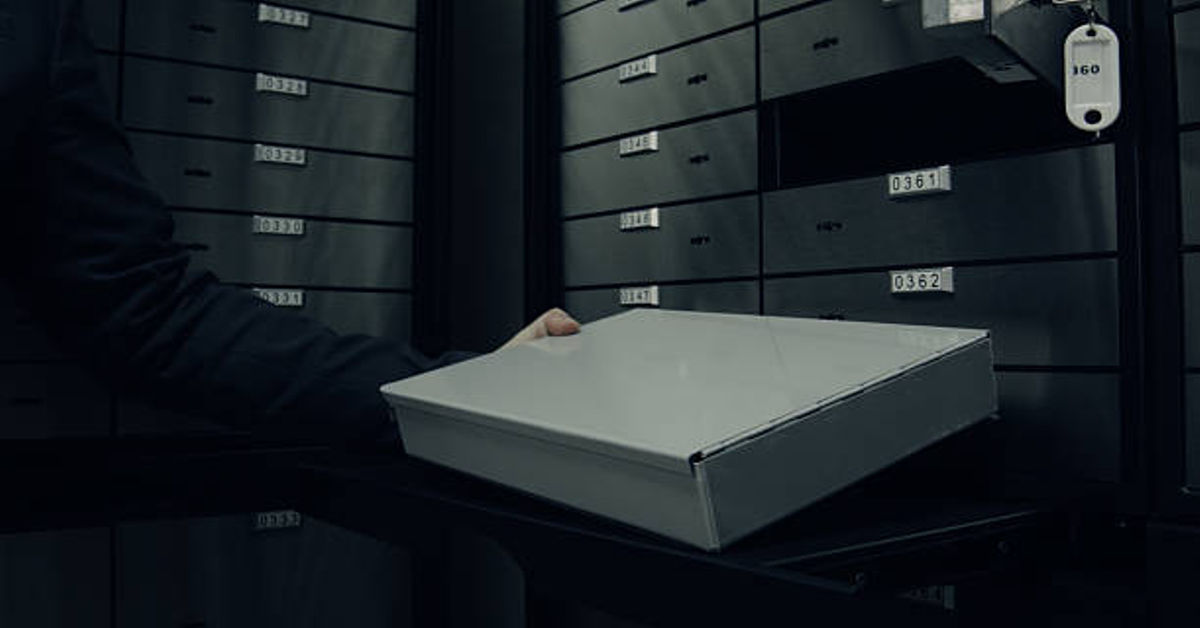A safe deposit box is a secure, physical storage facility, typically located in banks or specialized vaults, used to protect valuable items and important documents from theft, loss, fire, or natural disasters. Unlike personal home safes, safe deposit boxes provide an extra layer of security backed by institutional protection and strict access protocols. While the concept may appear straightforward, there is much more to understand about how safe deposit boxes operate, their types, legal implications, costs, and practical tips for optimal use. This guide delves deeply into every aspect of safe deposit boxes, offering a comprehensive, clear, and rich resource for anyone considering or already using one.
1. What Is a Safe Deposit Box? Definition and Purpose
A safe deposit box is a secure, lockable container maintained within a bank vault or security facility. Its primary purpose is to safeguard items that require protection from theft, damage, or unauthorized access. People typically use safe deposit boxes for:
- Important documents – wills, property deeds, insurance papers, passports
- Valuables – jewelry, coins, heirlooms, rare collectibles
- Digital media – USB drives or hard drives containing sensitive information
- Backup items – copies of critical contracts or financial agreements
The key advantage is that the items are not only physically protected but also benefit from the controlled environment of a bank vault, which is usually fireproof, temperature-controlled, and monitored around the clock. Safe deposit boxes provide peace of mind, especially for items that are irreplaceable or extremely valuable.
2. Historical Development of Safe Deposit Boxes
The concept of secure storage dates back centuries. In early civilizations, wealthy individuals and institutions stored valuable items in locked chests, safes, or strong rooms. With the emergence of modern banking in the 18th and 19th centuries, banks began offering dedicated storage units in vaults, which evolved into today’s safe deposit boxes. Originally, these boxes served mainly affluent clients, but over time, banks and financial institutions recognized the broad need for secure storage for legal documents, family heirlooms, and other valuables, making safe deposit boxes widely available. Today, they remain a trusted solution for asset protection.
3. How a Safe Deposit Box Works
A safe deposit box functions within a highly secure vault. Access typically requires multiple layers of verification:
- Identification – The client must present valid ID and often a bank membership card.
- Authentication – Some banks require dual verification, such as a password, PIN, or biometric scan.
- Dual Key System – Most boxes use two keys: one held by the client, the other by the bank. Both keys are needed to open the box.
- Surveillance – Continuous monitoring, alarms, and security personnel ensure safety.
Once inside the vault, clients can open their boxes, store or remove items, and return them under supervision. These procedures minimize the risk of unauthorized access.
4. Types of Safe Deposit Boxes
Safe deposit boxes come in different sizes, materials, and access types, depending on client needs. Understanding the options ensures appropriate selection.
Table: Safe Deposit Box Types and Features
| Type | Description | Typical Use | Size Options | Special Features |
|---|---|---|---|---|
| Standard Bank Box | Most common type in bank vaults | Documents, jewelry, cash | Small, medium, large | Dual key, monitored vault |
| Fireproof Box | Resistant to fire and heat | Critical documents, digital media | Medium to large | Fire and heat-resistant lining |
| Waterproof Box | Protects against water damage | Papers, electronics | Small to medium | Sealed waterproof construction |
| Safety Locker | High-security option for extremely valuable items | Rare collectibles, heirlooms | Variable | Reinforced materials, restricted access |
| Corporate Box | Tailored for businesses | Contracts, confidential files | Large | Multi-user access, audit tracking |
| Home Bank Box | Portable private vault | Cash, emergency items | Small | Combination or biometric lock, movable |
Choosing the right box depends on value, volume, and risk tolerance.
5. Advantages of Using a Safe Deposit Box
Safe deposit boxes offer multiple benefits, making them an attractive choice for personal, legal, and business needs:
- Enhanced Security – Banks provide physical security, alarms, and monitoring.
- Protection from Natural Disasters – Vaults are often fireproof, waterproof, and earthquake-resistant.
- Privacy – Access is restricted to authorized individuals.
- Reduced Risk of Theft – Items are stored off-site, away from potential home burglaries.
- Long-Term Storage – Ideal for items requiring preservation over decades.
- Legal Advantages – Storing documents such as wills or property deeds ensures they are protected in legal disputes.
These advantages make safe deposit boxes a preferred solution for safeguarding high-value or sensitive assets.
6. Limitations and Considerations
While secure, safe deposit boxes have certain limitations:
- Limited Access Hours – Clients can usually access boxes only during bank hours.
- Not Immune to All Risks – In rare cases, bank failure or natural disasters could compromise security.
- Cost – Annual rental fees vary depending on size and location.
- No Insurance for Contents – Banks rarely insure contents; clients may need separate coverage.
- Legal Restrictions – Certain items, such as firearms or illegal substances, cannot be stored.
Understanding these limitations helps users make informed decisions about what to store and how to supplement protection with insurance.
7. Common Contents Stored in Safe Deposit Boxes
People store a wide variety of items in safe deposit boxes. Common categories include:
- Financial Assets – Cash, bonds, stocks certificates
- Legal Documents – Wills, property deeds, powers of attorney
- Personal Valuables – Jewelry, heirlooms, collectibles
- Digital Media – Backup drives, encryption keys
- Emergency Information – Medical records, insurance policies, passports
Choosing contents depends on individual priorities, value, and risk assessment.
8. How to Access a Safe Deposit Box
Access procedures are strict to prevent unauthorized entry:
- Verification of Identity – Government-issued ID, signature, and sometimes additional authentication.
- Dual Key System – One key held by the bank, one by the client; both required.
- Documentation – Sign-in logs and authorization forms ensure accountability.
- Assistance by Bank Staff – Vault staff often oversee usage to maintain security.
These procedures safeguard clients and ensure proper chain of custody for valuable items.
9. Costs of Safe Deposit Boxes
Rental fees for safe deposit boxes vary based on size, bank, and location. On average:
- Small Box (2×5 inches) – $25–$50 per year
- Medium Box (5×5 inches) – $50–$100 per year
- Large Box (10×10 inches) – $100–$250 per year
Additional costs may include access fees, insurance premiums for high-value items, or late payment penalties. Comparing costs among banks ensures value for money.
10. Legal and Estate Considerations
Safe deposit boxes have unique legal implications:
- Ownership Verification – Banks require proof of ownership and authorization for all users.
- Access on Death – In many jurisdictions, safe deposit boxes are sealed until a court grants access to heirs or executors.
- Legal Disputes – Contents can be subject to probate or legal claims.
- Trust and Estate Planning – Placing wills or critical documents in a box ensures safekeeping and easier administration of estates.
Understanding legal considerations is essential for responsible and effective use.
11. Insurance for Safe Deposit Box Contents
While banks secure the physical box, they typically do not insure its contents. Clients can obtain insurance through:
- Homeowner’s or renter’s insurance (endorsement for box contents)
- Specialized high-value insurance policies for jewelry, collectibles, or documents
Insurance ensures peace of mind in case of theft, fire, or natural disasters.
12. Safety Tips and Best Practices
Using a safe deposit box safely requires adherence to best practices:
- List Contents – Keep an inventory outside the box.
- Avoid Storing Illegal Items – Ensure compliance with laws.
- Inform Trusted Individuals – Let heirs or executors know access procedures.
- Regularly Review – Check contents periodically to ensure items are intact and relevant.
- Use Secure Boxes for High-Value Items – Prioritize insurance coverage.
These steps minimize risk and improve the effectiveness of safe deposit storage.
13. Digital Alternatives to Safe Deposit Boxes
While physical boxes remain secure, digital storage solutions are emerging:
- Encrypted Cloud Storage – For documents, digital media, and sensitive files.
- Hardware Security Devices – Portable drives with biometric protection.
- Digital Vaults – Banks or fintech companies offering encrypted storage.
Despite convenience, physical safe deposit boxes remain unmatched for tangible items like jewelry or rare collectibles.
14. Choosing the Right Safe Deposit Box
Factors to consider when selecting a box include:
- Size of Items – Ensure all valuables fit comfortably.
- Location of Bank – Choose convenient, low-risk locations.
- Access Policy – Verify access hours, rules, and dual key requirements.
- Security Features – Fireproof, waterproof, and vault quality.
- Cost – Annual fees and potential insurance costs.
Careful selection ensures maximum protection, convenience, and peace of mind.
15. Modern Innovations in Safe Deposit Boxes
Banks and security facilities now offer innovations such as:
- Biometric access systems
- Video monitoring of box interactions
- Environmental controls for temperature-sensitive items
- Mobile notification systems for access
- Enhanced audit trails for multi-user or corporate boxes
These features improve convenience and security in a modern context while retaining traditional safety advantages.
16. Conclusion
Safe deposit boxes remain one of the most reliable ways to protect valuable items and critical documents. They combine physical security, institutional oversight, and privacy while offering protection against theft, fire, and unauthorized access. While they have costs, access limitations, and legal considerations, careful use and proper planning make them indispensable tools for personal, family, and business asset protection. By understanding types, usage practices, costs, insurance options, and legal aspects, individuals can optimize the benefits of safe deposit boxes and safeguard their most important possessions.
Frequently Asked Questions (FAQs)
1. What is a safe deposit box?
A safe deposit box is a secure, bank-maintained container used to store valuables, documents, or sensitive items.
2. What can I store in a safe deposit box?
Common items include jewelry, cash, wills, deeds, digital media, and important legal or personal documents.
3. Are safe deposit box contents insured?
Banks usually do not insure contents; separate insurance through homeowner or specialty policies is recommended.
4. How is access to a safe deposit box controlled?
Access typically requires dual keys, identification, and sometimes biometric verification or bank staff supervision.
5. Can heirs access a safe deposit box after death?
Yes, but often only through court authorization, ensuring legal oversight of sensitive or valuable items.











